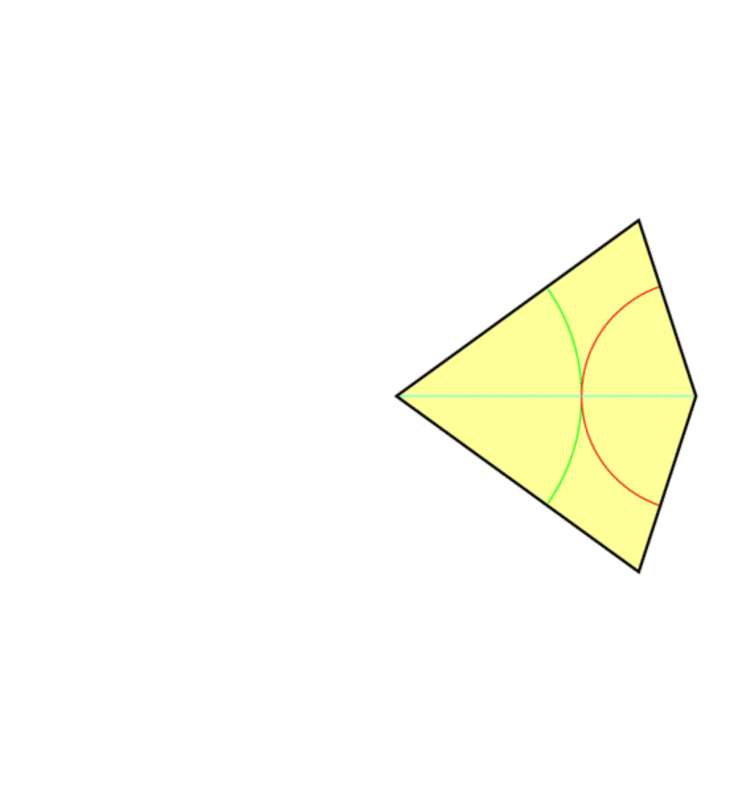Mars’ natural satellites – Phobos and Deimos – have been a mystery since they were first discovered. While it is widely believed that they are former asteroids that were captured by Mars’ gravity, this remains unproven. And while some of Phobos’ surface features are known to be the result of Mars’ gravity, the origin of its linear grooves and crater chains (catenae) have remained unknown.
How could we colonize Mercury?
Humanity has long dreamed of establishing itself on other worlds, even before we started going into space. We’ve talked about colonizing the Moon, Mars, and even establishing ourselves on exoplanets in distant star systems. But what about the other planets in our own backyard? When it comes to the Solar System, there is a lot of potential real estate out there that we don’t really consider.
How many moons does our solar system have?
For millennia, human beings stared up at the night sky and were held in awe by the Moon. To many ancient cultures, it represented a deity, and its cycles were accorded divine significance. By the time of Classical Antiquity and the Middle Ages, the Moon was considered to be a heavenly body that orbited Earth, much like the other known planets of the day (Mercury, Venus, Mars, Jupiter, and Saturn).
What do aliens look like? The clue is in evolution
Speculating about what aliens look like has kept children, film producers and scientists amused for decades. If they exist, will extra terrestrials turn out to look similar to us, or might they take a form beyond our wildest imaginings? The answer to this question really depends on how we think evolution works at the deepest level.
Cruising at 20% of the speed of light has some inherent risks
How long does it take to get the asteroid belt?
Between the orbits of Mars and Jupiter lies the Solar System’s Main Asteroid Belt. Consisting of millions of objects that range in size from hundreds of kilometers in diameter (like Ceres and Vesta) to one kilometer or more, the Asteroid Belt has long been a source of fascination for astronomers. Initially, they wondered why the many objects that make it up did not come together to form a planet. But more recently, human beings have been eyeing the Asteroid Belt for other purposes.
The maths behind ‘impossible’ never-repeating patterns
Remember the graph paper you used at school, the kind that’s covered with tiny squares? It’s the perfect illustration of what mathematicians call a “periodic tiling of space”, with shapes covering an entire area with no overlap or gap. If we moved the whole pattern by the length of a tile (translated it) or rotated it by 90 degrees, we will get the same pattern. That’s because in this case, the whole tiling has the same symmetry as a single tile. But imagine tiling a bathroom with pentagons instead of squares – it’s impossible, because the pentagons won’t fit together without leaving gaps or overlapping one another.
Is every human voice and fingerprint really unique?
Barclays, the UK bank, is to replace the password system on its phone banking service with personal voice recognition. “Unlike a password, each person’s voice is as unique as a fingerprint,” said Steven Cooper, Barclays' head of personal banking. Yet the reality is we have no idea whether either fingerprints or voices are unique at all.
Why so serious? The untapped value of positive psychology
All we can ever hope to do, Sigmund Freud once wrote, is “to change neurotic misery into common unhappiness”. This pessimistic statement from arguably the most influential psychological theorist of modern times captured the mood that prevailed in psychology through most of the 20th century. That is, most psychologists, psychiatrists and psychoanalysts were essentially guided by a model of the patient that was based on what was wrong with people, and how to deal with these deficiencies.
Why have we not found any extraterrestrial life yet?
If we ever came across aliens, would we be able to understand them?
Many scientists believe that alien civilisations exist. For them, the question is now whether we will encounter them in the near future or a very long time from now, rather than if at all. So let’s imagine that we suddenly stand face-to-face with members of an alien species. What would we do first? Surely communicating that we come in peace would be a priority. But would we ever be able to understand each other?
Why time seems to go by more quickly as we get older
Research Check: is it true only half your friends actually like you?
Beyond Neptune, A chunk of ice is orbiting the sun in the wrong direction
Beyond the orbit of Neptune, the farthest recognized-planet from our Sun, lies the mysteries population known as the Trans-Neptunian Object (TNOs). For years, astronomers have been discovering bodies and minor planets in this region which are influenced by Neptune’s gravity, and orbit our Sun at an average distance of 30 Astronomical Units.
A 400-year-old shark is the latest animal discovery to reveal the secrets of long life
With an estimated lifespan of 400 years, the Greenland shark has just been reported to be the longest-lived vertebrate on the planet. This is only the latest of a series of recent findings that push the boundaries of animal longevity, and it raises the perennial question of what factors enable some animals to achieve what we might call extreme longevity – lifespans that can be measured in centuries.
Microscopic marine plants bioengineer their environment to enhance their own growth
Space submarines will allow us to explore the seas of icy moons
One of the most profound and exciting breakthroughs in planetary science in the last two decades has been the discovery of liquid methane lakes on the surface of Saturn’s largest moon Titan, and liquid oceans under the icy surfaces of many of the giant gas planets' other moons. Thrillingly, these some of these “waters” may actually harbour life.
The power of Jupiter’s Great Red Spot: enormous storm may be heating the atmosphere
There is an “energy crisis” on Jupiter. At 800K (527ºC), its upper atmosphere is 600 degrees hotter than expected – a phenomenon also seen on the other giant planets in our solar system. And to make the matter even more perplexing, researchers have now discovered that the region of the atmosphere above Jupiter’s Great Red Spot, a giant storm system, is hundreds of degrees hotter than anywhere else on the planet.
Does drinking hot tea in summer really cool you down?
I remember as a child, on the rare warm days that we used to get in Britain, my grandmother telling me to “have a cup of black tea … it will help cool you down”. As a seven-year-old, this seemed like a crazy idea, especially when all I wanted was a cold lemonade and another ice cream. But it appears that this old wives’ tale may actually be more Stephen Hawking than Stephen King.
Humans now drive evolution on Earth, both creating and destroying species
In scientific research on human impact the focus is usually aimed at the extinction of species. Nowadays however, scientists are becoming more and more aware of the fact that trough, for example animal domestication, we have also become a driving force of evolution. This driving force that has led to new species, traits and ecosystems.

















